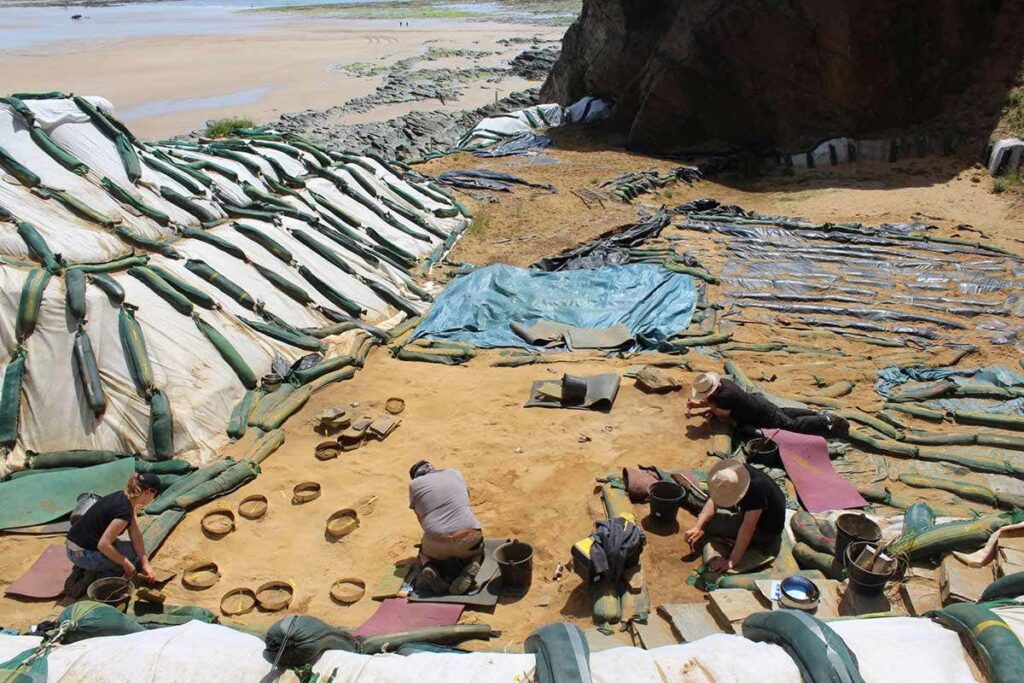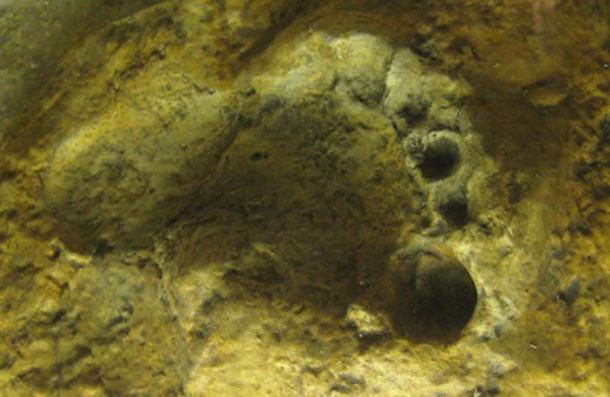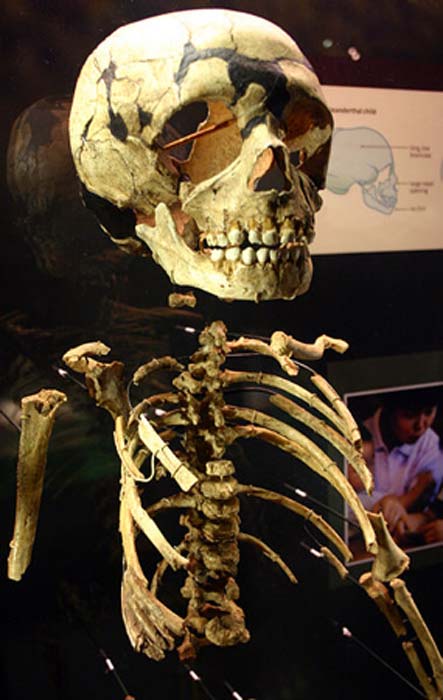Ancient footprints show Neanderthals may have been taller than thought
We know it as archeologists have seen hundreds of Neanderthals footprints in France — most of them laid by children. They walked and maybe played along the beach in the prehistoric world ;
Do we discover that Neanderthals were more like modern humans than previously thought by following their footsteps? Have we been underestimated our ancient cousins?
The 257 footprints from Neanderthal found by archaeologists from Le Rozel, on the coast of northwest France, Manche, Normandy, and what is surprising to the scientists is that the majority of the prints are made by children.

In 1856, in a limestone quarry in the Neander Valley near Düsseldorf, Germany, a set of ancient bones were discovered including an oval-shaped skull with a low, receding forehead and distinct brow ridges.
Scientists initially believed belonged to a deformed human but after several weeks the penny dropped that they had discovered an early human ancestor and that species was named Homo neanderthalensis.
Neanderthal ancestors left Africa before modern humans, as far back as 500,000 years ago, and they were in Europe when our ancestors walked the same journey about 70,000 years ago.
It is thought Neanderthals eventually disappeared around 40,000 years ago. But now, archaeologists in Le Rozel, on the coast of northwest France, in the department of Manche, Normandy, have discovered 257 footprints from Neanderthals and what surprises the scientists is that most of the prints were made by children.
Footprints of A Lost Species
This year, a scientific paper was published in Quaternary Science Reviews explaining that previous to Le Rozel, only one set of 62,000-year-old Neanderthal footprints had ever been found, in Romania.
Then, in 2018, an array of fossilized footprints was discovered in an ancient sand dune in Gibraltar, of the Iberian Peninsula, which was thought to have been left by one of the “last Neanderthals ever to walk the Earth.”

Coastal erosion first exposed Le Rozel in France in 1967 and the site has been excavated every three months since 2012. The discovery of these “extremely rare footprints” is by far the largest group of hominin fossil footprints found to date. And while some of the footprints were found in isolated patches, some were found in a walking sequence, with one footprint after another.
The new paper, published in PNAS by Dr. Jérémy Duveau of the Museum of National History in Paris and colleagues, says that no hominin species other than Neanderthals are known to have been living in the area of Le Rozel at the time.
This was supported by the types of stone tools they recovered which according to the paper were “typical of Neanderthals of the time”. The scientists concluded that this particular group contained at least four Neanderthals, but more likely up to 13, to count for all the footprints.
Were Neanderthals Taller Than We Think?
The researchers say the first and foremost indicator that these prints were Neanderthal was the shape of the foot, which is flatter and “less gracile” than ours. Of the 257 recorded footprints, 88 were complete and ranged from 11.4 to 28.7 centimeters (4.5 to 11.3 inches) in length, indicating the Neanderthals ranged from 74 centimeters in height (2 feet, 5 inches tall) to 185 centimeters (6 feet, 1 inch) – children and adults.

The scientists found the average height within this group of Neanderthals was 175 centimeters, (5 feet, 7 inches) compared with modern Homo sapiens averaging about 5 feet, 9 inches. These measurements, according to a report in New Scientist, match the average height of a man in the USA today suggesting Neanderthals could have been “taller than previous evidence suggests.”
Crabs on A Beach Leave Many Prints
The measured sizes of the footprints established that “more than half the occupants were shorter than 130 centimeters (4 feet, 3 inches) tall” suggesting that between 80 to 90 percent of the individuals were children, with a 2-year-old’s print measuring only 11.4 centimeters (4.5 inches) in length.
However, caution must be extended to the suggested group size of 13 based on the footprint count for, as any of you that have children will know, when left to their own devices, they can be like beach crabs tootling to-and-fro with the tide.
In practice, one child leaves many prints for everyone left by an adult, but accounting for this and other variables, the team of researchers believe their conclusion that children made up most of the group “is reasonable”.
These new results were compared to another Neanderthal group that had lived in the El Sidrón cave system in northern Spain in Normandy about 48,000 years ago, where researchers conducted mitochondrial genetic analysis and found seven adults, three adolescents, two children, and one infant—which is clearly a far higher proportion of adults to children.





